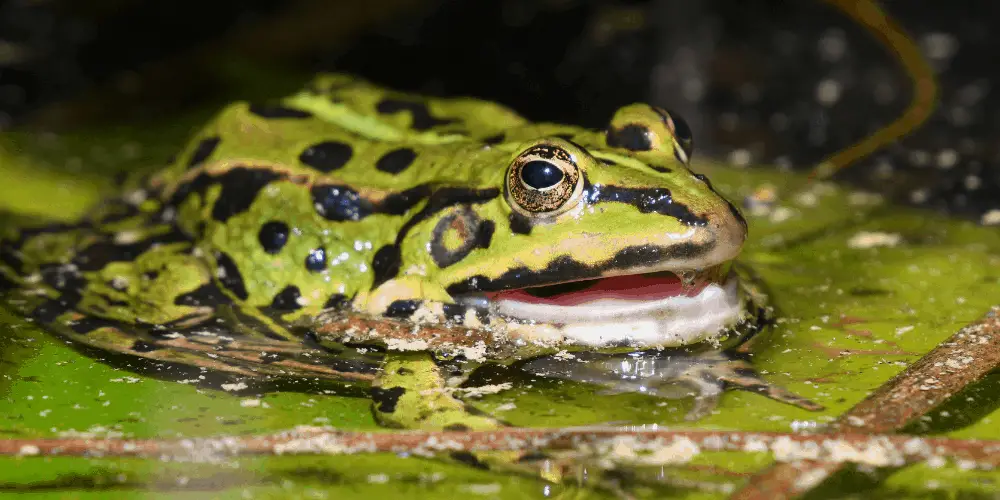Frogs, with their captivating leaps and vibrant colors, often leave us pondering about their dietary choices. Amidst the buzzing insects and shimmering waters, a question arises: Do Frogs Eat Mice?
Larger frog species like bullfrogs, Pacman frogs, White’s tree frogs, and Chilean giant frogs will eat mice if given the opportunity. However, mice do not make up a significant part of most frogs’ diets. Smaller frog species cannot successfully hunt or swallow mice due to size constraints.
Discover which frogs fancy this fare and the intriguing reasons behind their diverse diets.
Key Takeaways
- Some larger frog species do consume mice as part of their diet.
- Frogs primarily feed on insects using their sticky, elongated tongues.
- The dietary range of frogs is vast, with some preferring more substantial fare like mice.
- The amphibian world boasts a diverse range of frog species with varied diets.
- Frogs employ various hunting strategies, including ambush, pursuit, and drowning.
- A frog’s habitat plays a significant role in determining its dietary choices.
- Mice offer frogs valuable nutrients like proteins, fats, and minerals.
- The consumption habits of frogs impact local ecosystems and food chains.
- Understanding frog diets helps in comprehending the ecological balance.
Understanding Frog Diets: A General Overview
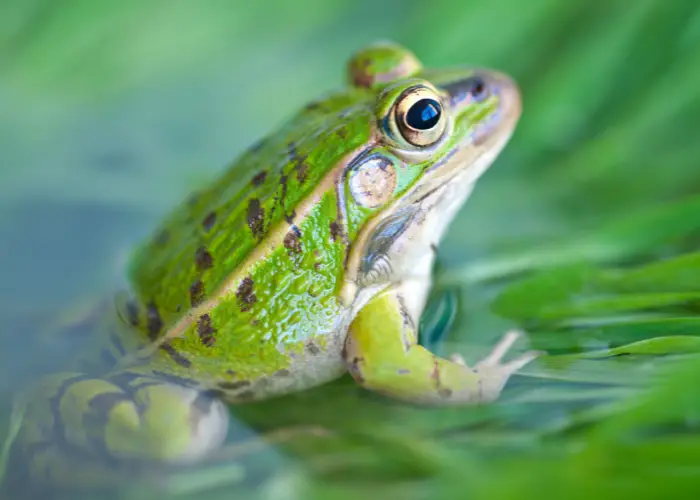
Frogs are primarily known for their love of insects, utilizing their sticky, elongated tongues to catch their prey.
However, the dietary spectrum of frogs is vast, with some species exhibiting preferences for more substantial fare, including mice.
Typical Diet
- Insects: The staple food for most frog species.
- Small invertebrates: A variety in diet is essential, and small invertebrates play a crucial role.
- Small mammals: A rare but intriguing part of the diet for some species.
For a deeper dive into the omnivorous nature of frogs, explore Are frogs omnivores?
Diversity in Frog Species and Diets
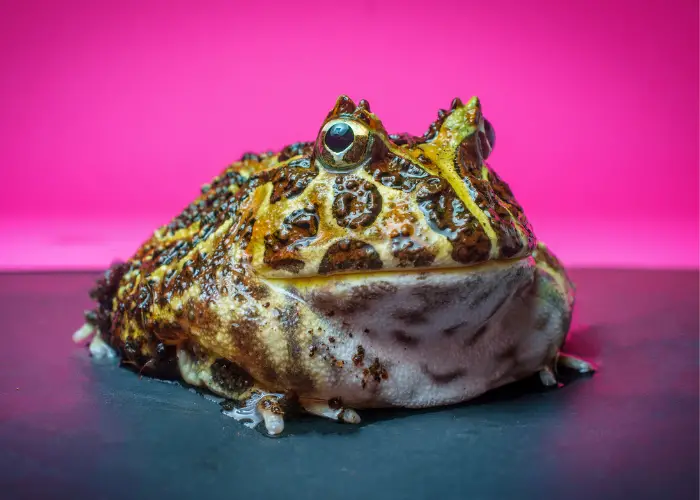
The amphibian world is teeming with many frog species, each with unique dietary proclivities. The variety in species and diets is staggering, from the tiny tree frog to the colossal Goliath frog.
Species Known to Eat Mice
- Pacman Frog: Known for its unique appearance and ability to consume mice.
- African Bullfrog: A monstrous species with a voracious appetite, including mice.
- American Bullfrog: Smaller but no less ferocious, this species also includes mice in its diet.
- Goliath Frog: The world’s largest frog, with a diet as vast as its size, including small mammals.
Predatory Behavior and Hunting Strategies
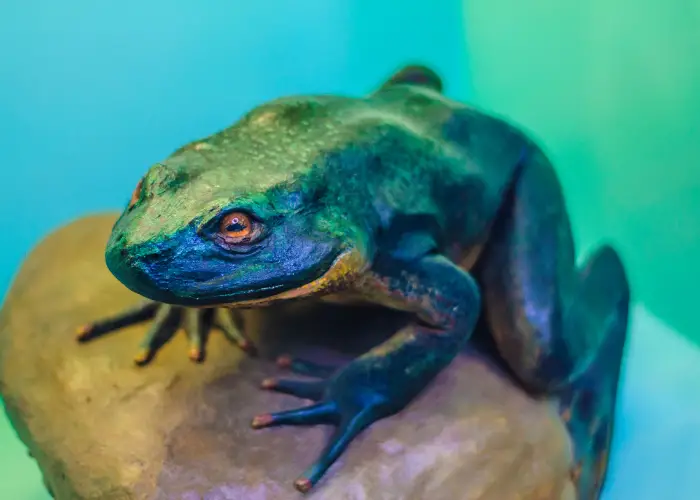
Frogs employ a range of hunting strategies to subdue their prey, adapting their techniques based on the size and nature of the prey.
The consumption of mice by frogs is a testament to their versatile and opportunistic feeding behaviors.
Hunting Strategies
- Ambush: Lying in wait for the unsuspecting prey.
- Pursuit: Actively chasing down the prey.
- Drowning: Submerging the prey underwater.
Curious about the defensive side of frogs? Discover whether frogs bite and learn more about their interaction with other species and humans.
Habitat, Prey Availability, and Dietary Choices

The availability of prey is intricately linked to the habitat in which a frog resides. Different habitats offer varying prey options, influencing the dietary choices of the resident frogs.
Habitat Types
- Forests: Rich in biodiversity, offering a variety of prey.
- Wetlands: A haven for aquatic and semi-aquatic species.
- Grasslands: Home to species adapted to open landscapes.
Nutritional Insights: Mice in Frog Diets

Mice, rich in proteins and fats, offer substantial nutritional benefits to frogs capable of consuming them. The frequency of mice in a frog’s diet is contingent upon the species and the availability of such prey in their habitat.
Nutritional Components of Mice
- Proteins: Essential for growth and muscle development.
- Fats: A crucial source of energy.
- Minerals: Important for various bodily functions.
Ecological Implications of Frogs Eating Mice
The dietary habits of frogs, including their consumption of mice, have significant repercussions on local ecosystems and food chains.
Understanding these implications is crucial for comprehending the ecological balance and the role of frogs within it.
Impact on Ecosystem
- Predation: Maintaining the balance in the food chain.
- Population Control: Regulating the numbers of various species.
- Biodiversity: Contributing to the richness of life in an ecosystem.
Conclusion
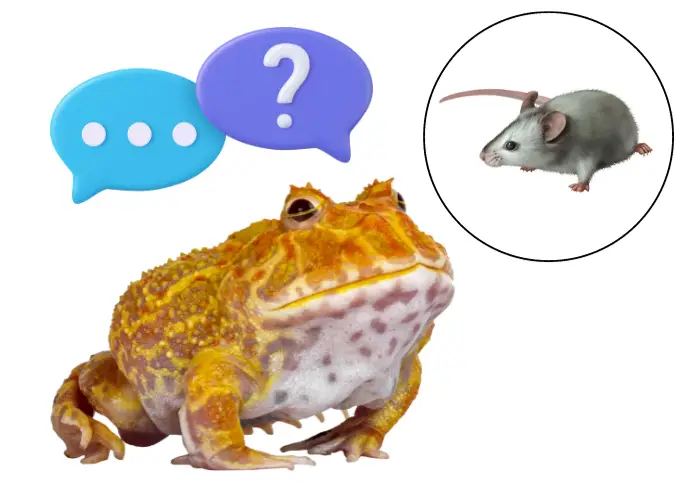
In this exploration through the diverse and intriguing world of frog diets, we’ve leaped across various habitats and species, shedding light on whether frogs eat mice.
From understanding their general diets to exploring the ecological implications of their feeding habits, we’ve unraveled the mysteries of these fascinating amphibians.
For more intriguing insights into the world of frogs, such as what do you call a group of frogs?, continue exploring our extensive collection of articles on Animal Pickings.
References:
- Ceratophrys. (2023, August 9). In Wikipedia. https://en.wikipedia.org/wiki/Ceratophrys
- Pacific horned frog. (2022, October 25). In Wikipedia. https://en.wikipedia.org/wiki/Pacific_horned_frog
- Fat Frog Eats Mouse (Giant African Bullfrog) [Warning: Live feeding!]. (2021, January 12). [Video]. YouTube. https://youtube.com/watch?v=KSZsoNDvVG0[1]
- Giant African Bullfrog eats adult mice. Warning live feeding!!! (2021, April 19). [Video]. YouTube. https://youtube.com/watch?v=eVsg3FZbPRA[2]
- Bullfrogs Eat Mice – Slow Motion HD. (2019, February 24). [Video]. YouTube. https://youtube.com/watch?v=9qR9RxkBCPI[3]


